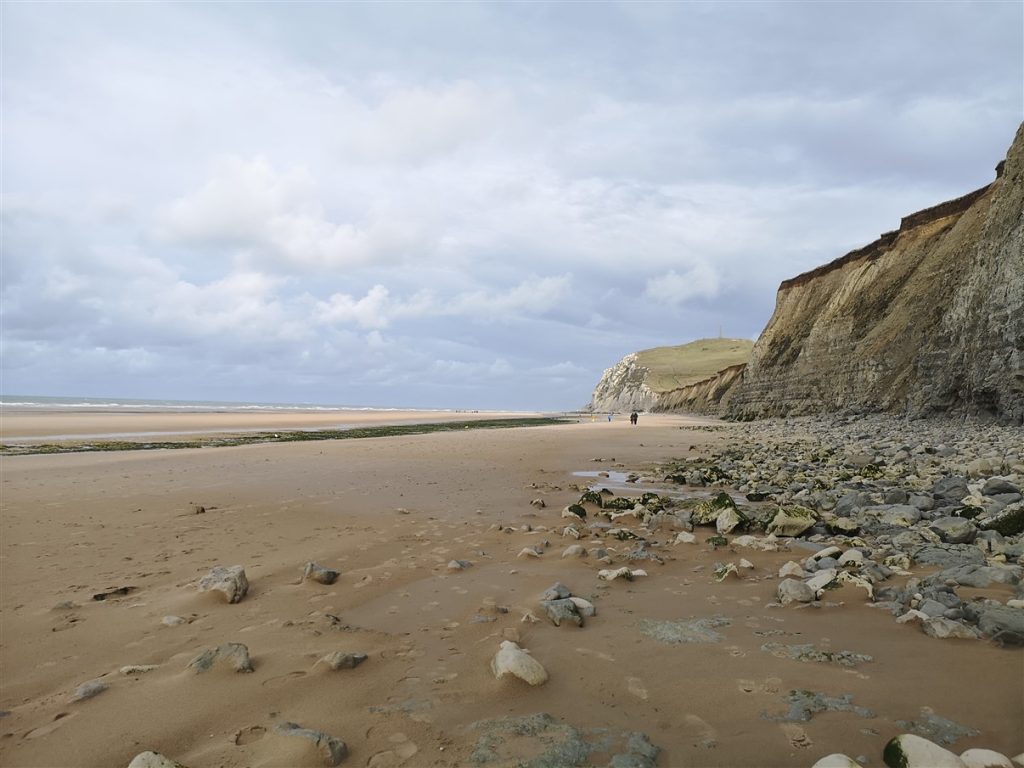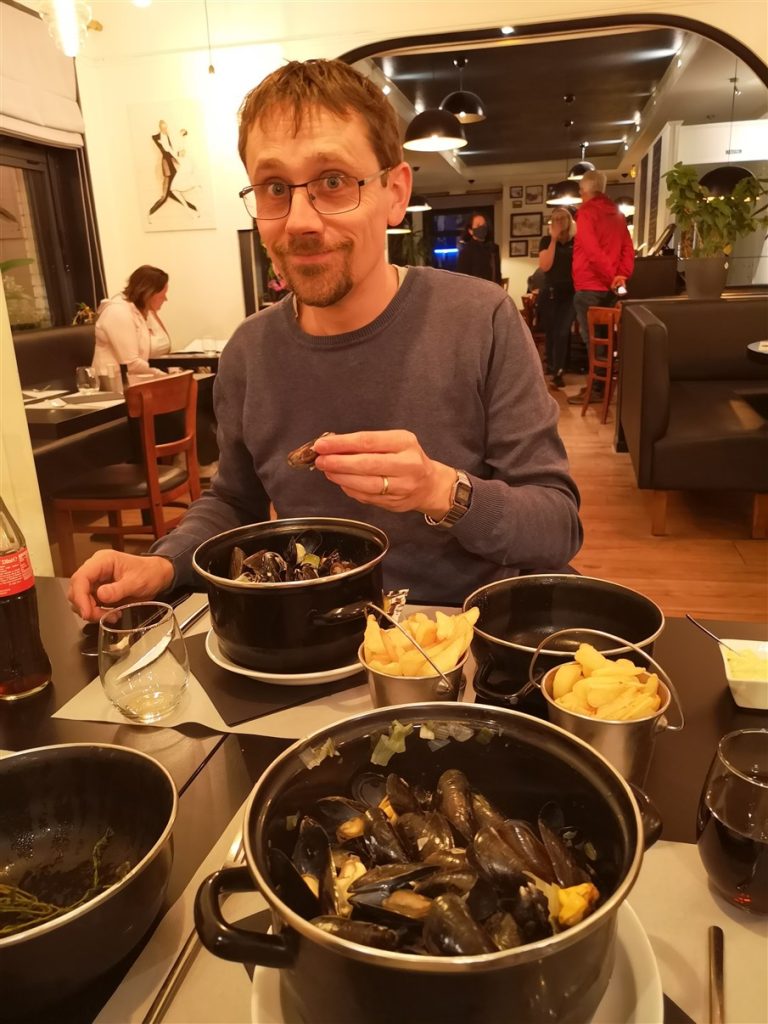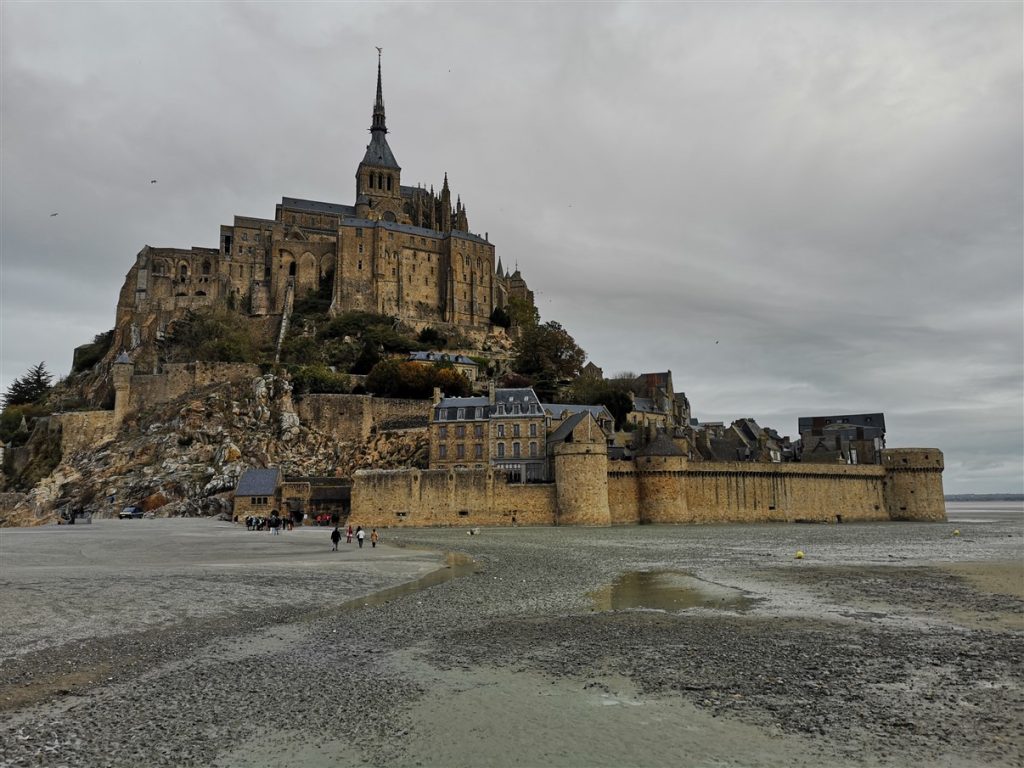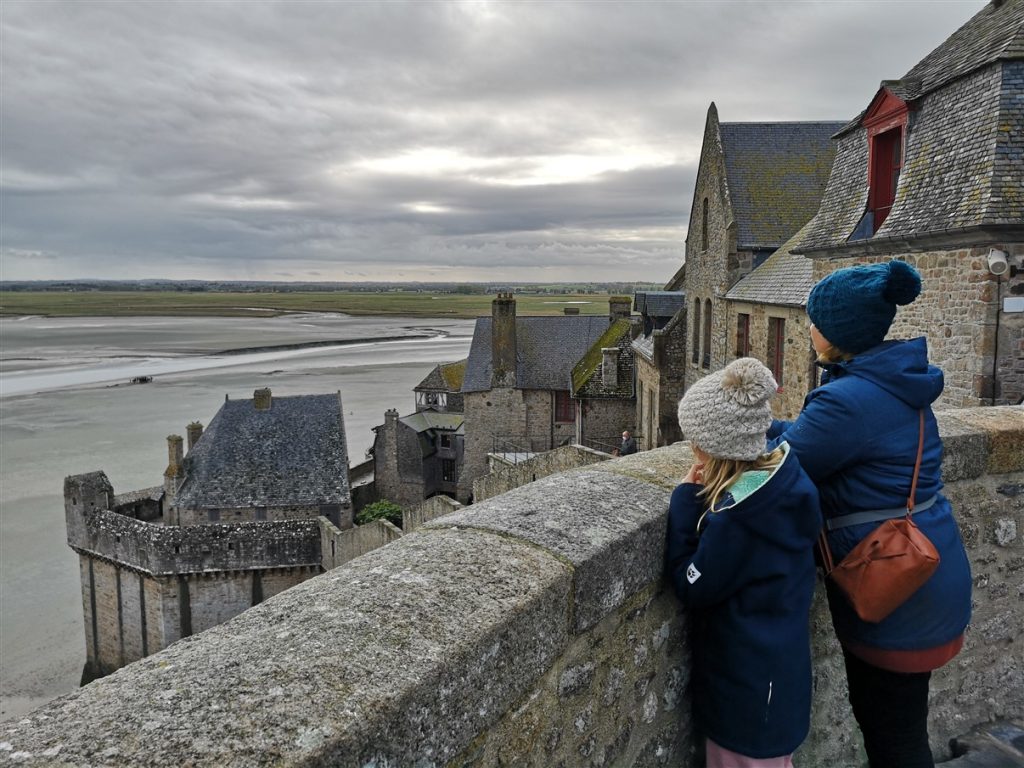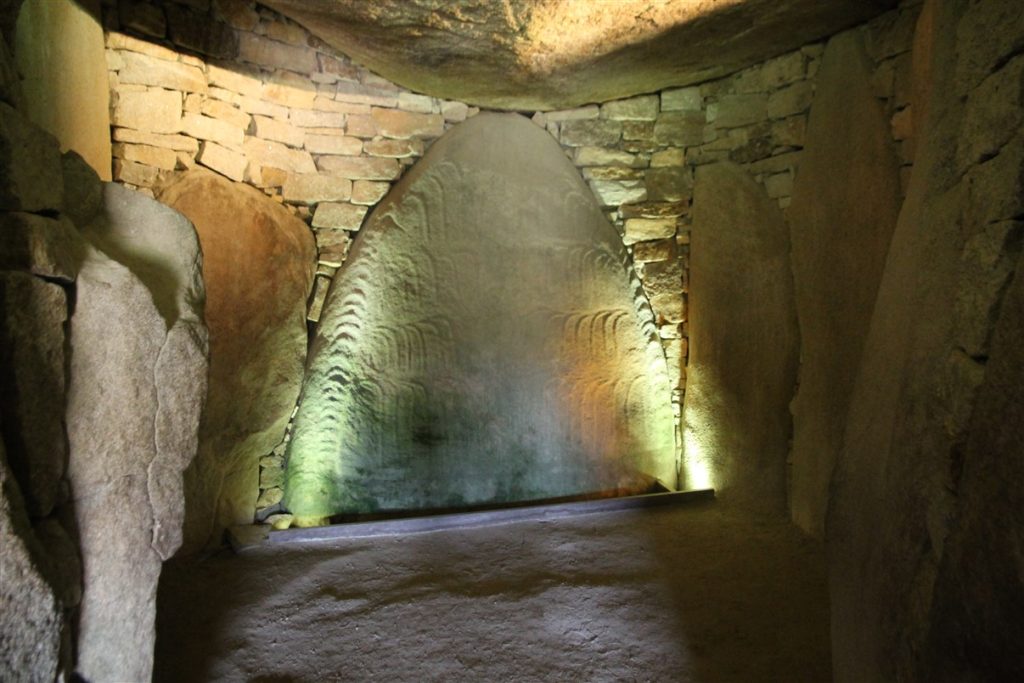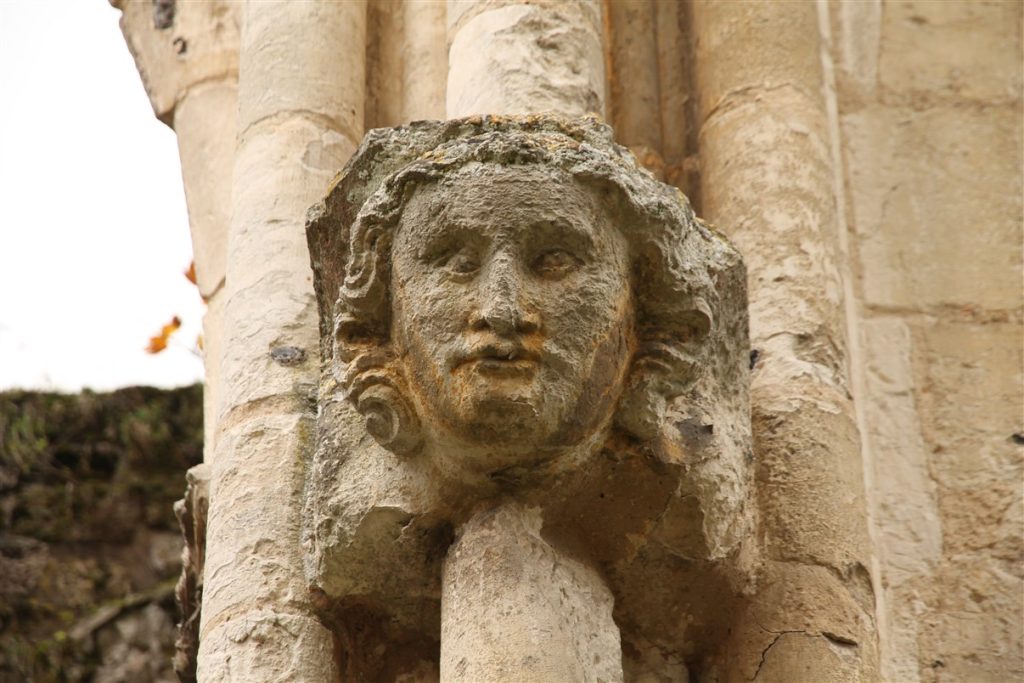Winter is coming, autumn is here already. The time for warm sweaters, a cosy fireplace, hot soup and colourful forest walks. And a perfect time to travel as well. Since we both work in education, and our daughter also has to attend school, we are limited to school holidays to satisfy our wanderlust. Last year, we made the most of our autumn break and decided to go on a short trip to the northwestern coast of France. Due to COVID-19, our travel plans in 2021 were put on hold and in the end we didn’t travel far in summer. As a result, we were eager to get up on our feet and hit the road again in October-November.
Road tripping in Autumn has been a challenge for us throughout the years. We tried renting a central home from where we made a number of day trips (in northern France), but this way of traveling limits you to a small geographical region. We tried camping with our tent (in Wales), but ended up cold and wet. This year, we decided to rent a rooftop tent. Again, it wasn’t a big success, but it definitely was an unforgettable adventure! Next time, we will try to rent a camper van. It’s expensive, but it really seems the only logical solution for road trips in cold, rainy weather.
This brings us to a second question: how feasible/realistic is a road trip to France in 6 days? Obviously, it depends on where you come from and where you want to go. We live in Belgium, which means the north of France is only an hour away. Normandy and Brittany are situated in the northwestern area of France and are therefore not unreachable for us, but just to give you an idea: the distance between our home and the southernmost stop of our road trip was still 800km, which is about an 8-hour drive.
So obviously, we had to make compromises. Focus on a limited number of must-sees. Limit the time at each stop. Try to be as efficient as possible in choosing the consecutive stops. Unfortunately, it still turned out we spent (too) many hours in the car and weren’t able to visit all places we had planned. We had to rush most days and so we didn’t always have enough time to relax and enjoy the moment. In hindsight, however, we mainly remember those numerous moments where we did have fun and soaked up all those breathtaking sights and impressions. We would like to guide you through our itinerary by means of a selection of photos and a few short notes:
Cap Blanc-Nez (The Opal Coast)
Just across the border with Belgium, the Côte d’Opale is a region with a spectacular rugged coast (comparable with its counterpart on the other side of the Channel), of which Cap Blanc-Nez (The Cape with the White Nose) is the most popular destination. Not only for hikers or sunbathers, but also for (amateur) paleontologists, who come here to uncover Cretaceaous fossils such as ammonites, belemnites, molluscs and crustaceans. This French Lyme Regis is well worth a visit! The seafood in this region is also legendary…
Arromanches-les-Bains
This silent coastal town in Normandy is one of the two places along the French coast where you can still find the remains of a Mulberry harbour (artificial port) used for disembarkation of military equipment during the allied invasion of Normandy (end of WWII). Some of the floating pontoons can still be found on the beach, others are scattered across the water: an otherworldly sight! D-Day doesn’t come more tangible than this…
The Overlord Museum (Russy)
The moment we left Arromanches-les-Bains, our daughter Febe suddenly insisted that she wanted to visit a museum about WWII. We didn’t go to the local museum in Arromanches, since we saw people queuing from outside, but this clearly sparked an interest in her. So, we decided to visit the first museum we found on our way. We followed the signs “Overlord Museum”, until we arrived at a huge concrete building, surrounded by WWII tanks. It turned out to be one of the largest WWII museums in the area, close to Omaha Beach. The first section consists mainly of printed material (photos, pamflets…), but the main hall is stuffed with an impressive collection of army vehicles, all arranged in combat or everyday situations. Very visual and very overwhelming. Definitely a highlight and the kind of museum children will definitely like.
Omaha Beach
On the 6th of June, 1944, this was one of the landing places of the allied forces and a genuine battlefield. A beach with a lot of (terrible yet hopeful) history! In contrast to Arromanches-les-Bains, however, the world-famous Omaha Beach is nothing more than a beach these days. Only the monument “Les Braves” (The Brave) recalls the casualties of the past. It was only a quick stop for us, but there are definitely more places of interest in the area. A must-see, simply because of its historical relevance.
The Mont-Saint-Michel
A highlight on every road trip in this area, this tidal island + medieval town + ancient abbey is simply a marvel you cannot miss. Since we had our car parked in nearby Macey, we were on the road quite early in the morning. The road towards the town/island is a superb experience, with beautiful views of the hill and the surrounding bay (both of which are part of the UNESCO world heritage site, btw), so don’t take a bus there. Walk and enjoy the scenery. It is worth it! The final part of your hike is facilitated by a pedestrian bridge, which will take you to the entrance gate (even during high tide). We arrived around 10am and that seemed to be a perfect timing, since the town was still relatively quiet. So go early and avoid the crowds, which will arrive just before noon.
A walk over the ramparts is a great way to see all corners of the town and look out over the bay surrounding it. From there, you can also visit the Abbey (a ticket can be bought at its entrance, which isn’t too expensive). Visiting the ancient, medieval abbey is definitely a must-do, especially for its historical relevance, serene atmosphere and interesting architecture. You can easily take a lunch inside the city walls, since it is packed with restaurants, although a reservation might be recommended.
The pink granit rocks of Perros-Guirec
A few hours driving from thé cultural highlight of the Normandy/Brittany coast brings you to thé natural highlight of this area: the pink granit coast. The rocks here are peculiar because of their colour and shapes and form a unique landscape that is the perfect backdrop for a healthy seaside hike. The lighthouse at Ploumanac’h is made from the same rocks it is standing on, and is definitely a very photogenic spot. Sunset might be the best moment for a visit.
Impressive prehistoric remains in Locmariaquer and Carnac
At the end of our visit to Brittanny, we ventured to its southern borders and back into ancient history. The prehistoric site at Locmariaquer features three different types of neolithic remains, all dating back to around 3000-5000 BC. The most impressive is definitely the Broken Menhir of Er Grah, Europe’s largest “standing” stone, which is currently no longer standing upright. Nevertheless, its sheer size is still breathtaking. The Er-Grah tumulus is a broad but flat structure and not nearly as interesting as the large dolmen/passage grave known as the Table des Marchand. It is possible to enter this structure. The central chamber has a few interesting decorations: one of the supporting stones is covered in engraved decorations which might represent weapons, sunbeams or wheat heads. One of the cover stones bears the image of a primitive plow, which indicates that it was originally a part of the giant Broken Menhir. Another decoration depicts the rear end of a cow, the front part of which can be found in Gavrinis, an island 4km to the east of Locmariaquer.
The region around Locmariaquer is very rich in millennia-old megaliths. Undoubtedly the most famous spot in this region is Carnac, an area well known for its unusually high density of 7000-years old standing stones (more than 3000), either as single structures (menhirs), in parallel rows (“alignements”) or as part of a dolmen (e.g. in Kermario). The impressive fields of stones are found as separate plots along the D196 road and it’s a must-see if you are in the area. The sheer number of these stones is really amazing: Carnac has the highest concentration of “alignements” in the world, but it still isn’t a UNESCO world heritage site yet. About time they include this site in the list, if you ask us.
Josselin
The medieval city of Josselin is most famous for its 14th-century, riverside castle. However, the town itself is also worth a visit. We would propose that you walk along the castle (and the river Oust) first, and enter the village from there. You will pass by several colourful half-timbered houses and the Cathédrale Notre Dame du Roncier. For lunch, we can recommend Crêperie La Sarrazine for its fine selection of Breton pancakes and a lovely regional cider.
Vitré
There is much more to be seen in Vitré than what we have experienced. This lovely medieval town has been designated a town of artistic and historic significance because of its rich cultural heritage. The city has preserved its original, 500-year old appearance, including its ramparts and a large castle. We only visited Vitré in the evening, in search of dinner, which was quite a difficult task in the middle of the week…
The abbey of Jumièges
This former Benedictine monastery is now one of the most beautiful ruins of France. The building has had a very turbulent history: it was built in 654, destroyed by viking raiders in 841, rebuilt and inaugurated by William the Conqueror in 1067, transformed into a quarry in 1796 and finally bought in 1853, to save it from total destruction. This is cultural/historical Instagram material, but also the ideal spot for a stroll, meanwhile daydreaming about times gone by.
Berck-sur-Mer
At the end of our visit, we headed north again. We arrived in Berck-sur-Mer for a small family reunion and some extraordinary seal-watching in the Bay of Authie. There are two species of seals here (common seal and grey seal), which live together on the “Plage des Phoques” (“Beach of the Seals”).
Nausicaá
We concluded our trip with a visit to Nausicaá, the largest aquarium in Europe, which is situated in Boulogne-sur-Mer. The number of fish and the size of the enormous fish tanks you can find here is truly unique. The number of visitors was, unfortunately, even more impressive…


